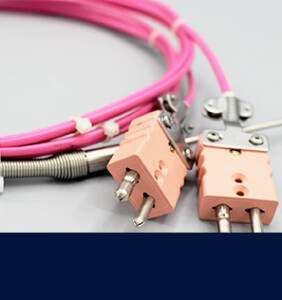Why Do Thermocouples Go Bad?
Thermocouples are essential for accurate temperature measurement in a wide range of industrial applications, but many users wonder, do thermocouples go bad? The answer is yes. Over time, factors like mechanical damage, excessive heat, and contamination can cause thermocouples to fail. Knowing why thermocouples go bad and recognizing the signs of wear can help prevent inaccurate readings, extend their lifespan, and maintain optimal performance in your temperature monitoring systems.
Understanding Thermocouples
Thermocouples are vital components used to measure temperature in various industrial applications. They function by producing a voltage that correlates with temperature changes, providing crucial data for maintaining optimal operations. Despite their robustness, thermocouples can fail prematurely, which can disrupt processes and lead to increased costs.
Several factors contribute to the deterioration of thermocouples. Mechanical damage, such as physical impacts or abrasion, can compromise their integrity. Overheating beyond their rated temperature range can also lead to premature failure. Understanding these aspects is key to ensuring their reliability and longevity.

Common Causes of Thermocouple Failure
Mechanical Damage: Physical wear and tear or accidental impacts can harm a thermocouple’s components. Damage to the protective sheathing or the wire itself can result in inaccurate readings or complete failure.
Overheating: Each thermocouple is designed to operate within a certain temperature range. Operating beyond this range can damage the thermocouple’s materials, causing them to degrade faster than normal.
Contamination: Exposure to harmful chemicals or debris can affect the thermocouple’s performance. Contaminants can lead to oxidation or metal fatigue, further shortening the thermocouple’s lifespan.
The Impact of Overheating on Thermocouples
Thermal Stress: Thermocouples are designed to operate within specific temperature ranges. When exposed to temperatures beyond their rated limits, they experience thermal stress. This stress can cause the sensor’s materials to degrade more quickly, leading to reduced accuracy and eventual failure.
Element Damage: Prolonged exposure to high temperatures can damage the thermocouple’s sensing elements. This damage may manifest as a shift in calibration or outright sensor malfunction, making it crucial to use thermocouples rated for your specific application.
Protective Coatings: Many thermocouples are equipped with protective coatings to shield them from extreme conditions. However, even these coatings have their limits. If the protective layer fails due to excessive heat, the underlying materials can suffer, further accelerating wear and tear.
Mitigation Strategies: To prevent overheating issues, ensure that you use the right thermocouple type for your temperature range. Regularly monitor operating temperatures and consider implementing cooling systems or heat shields to protect the thermocouples in high-temperature environments.
Installing Thermocouples the Right Way
Proper installation is crucial for extending the life of your thermocouples and ensuring they function correctly. Installing these sensors with care helps avoid common issues that can lead to premature failure. Start by following the manufacturer’s guidelines closely to ensure you’re using the correct techniques for mounting and positioning. Avoid applying excessive force during installation, as this can damage the sensor elements or cause misalignment. Handling the thermocouples carefully is also important to prevent contamination from oils or chemicals, which can degrade their performance. Regularly check the installed sensors for signs of wear or misalignment to address any issues early. By taking these steps, you can ensure your thermocouples remain reliable and accurate for a longer time.
Maintaining Thermocouples for Longevity
Ongoing maintenance is key to preventing thermocouple failure and ensuring they continue to operate effectively. Regularly inspect your thermocouples for signs of wear and tear, such as physical damage or corrosion. Cleaning the sensors and their connections can help maintain accuracy and prevent contamination-related issues. Implementing a routine maintenance schedule, including periodic calibration checks, can catch potential problems before they lead to significant failures. Additionally, replacing thermocouples at the first sign of malfunction can help avoid costly downtime and maintain operational efficiency. By prioritizing these maintenance practices, you can extend the service life of your thermocouples and keep your systems running smoothly.
Proactive Care for Reliable Thermocouples
In summary, while thermocouples are essential for accurate temperature measurement, they can fail prematurely due to various factors like mechanical damage, overheating, and human error. Understanding these risks and implementing proactive maintenance strategies are crucial for extending their lifespan. By taking steps to minimize potential issues and ensuring regular upkeep, you can significantly enhance the reliability of your thermocouples. This proactive approach not only helps avoid unexpected failures but also contributes to smoother operations and cost savings. For tailored advice on maintaining your thermocouples, Cleveland Electric Laboratories is here to assist you with expert guidance and solutions.



